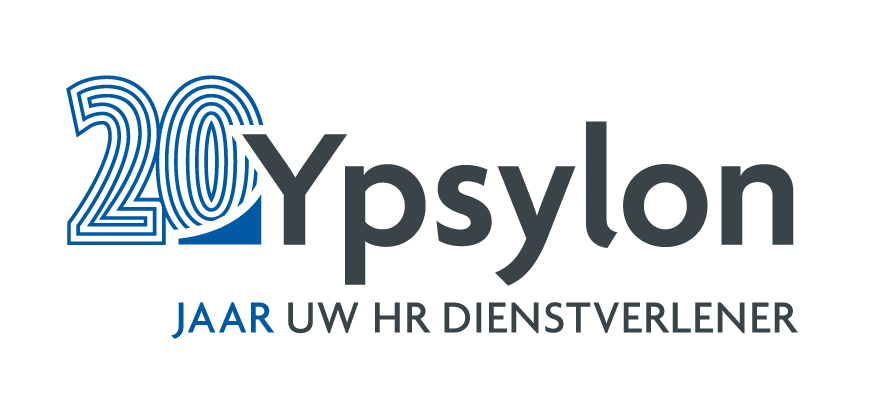Work-related stress is a theme that has been in de spotlight for several years now. This is not surprising, given the fact that in 2014 around 1 million Dutch people were suffering from burnout related symptoms and in 2018 this has risen to 1.3 million people. According to a research study by TNO and CBS, which has been conducted by more than 60,000 employees, the absenteeism costs for employers due to workplace stress in 2017 are now 2.8 billion euros. For comparison: in 2015 this was (only) 2 billion euros. In the same study, 45% of employees indicated that they felt that measures were needed to combat workplace stress. But what is work-related stress? Is this really that negative and what are the negative consequences? And what measures can you initiate as an organization against this rising problem?
What is stress?
The term "stress" often refers to the activated state of the body that responds to stressors (events / factors) from outside. These stressors can be physical (noise) or psychological (disturbed)) zijn. De mate waarin iemand in staat is hier mee om te gaan heeft te maken met zijn (dis)balans tussen draagkracht en draaglast. Met draagkracht worden de hulpbronnen van een persoon bedoeld. Dit zijn zowel hulpbronnen in de werkomgeving (help from a colleague)and internal (personality traits)). Met draaglast worden de taken bedoeld die een medewerker moet uitvoeren en de eisen die hieraan verbonden zijn. Een persoon beoordeelt dus in hoeverre zijn draagkracht opweegt tegen zijn draaglast. Dit is een proces waarbij subjectieve belevingen een rol spelen. Zolang iemand zijn draagkracht opweegt tegen zijn draaglast zijn stressoren niet zo zeer problematisch. In tegenstelling, het kan zelfs activerend werken! Het begint pas problematisch te worden wanneer gedurende langere tijd iemand zijn draaglast groter is dan zijn draagkracht. Er is dan sprake van chronische stress en dit kan zowel fysiek als psychologisch vervelende consequenties met zich mee dragen en kan zelfs uitmonden in een burn-out. Later in deze blog ga ik verder in op deze consequenties.
Stress is subjective!
As described above, stress is the result of a process of subjective assessment of a person. This is what the American Psychologist Richard Lazarus describes in his transactional stress model . According to Lazarus, when people are confronted with new or changing situations, they go through a process of assessment. The primary assessment assesses whether the situation should be seen as a stressor. Stressors fall into three categories: stressors that pose a threat, stressors that have already caused damage or loss and stressors that pose a challenge. Situations that do not fall within these categories are considered harmless or irrelevant. When the situation is seen as a stressor, the secondary assessment takes place. In the secondary assessment the person looks at his resources: the tools he has and the ability to deal with the stressor (coping). Coping can be broadly divided into two categories: problem-focused coping (changing the cause of stress) and emotion-focused coping (changing the emotional response to the situation).
What causes stress at the workplace?
Certain characteristics of the work situation can to a greater or lesser extent constitute as a stressor. Over the years many different psychological models have been developed about work-related stress. One of these is the Demand-Control Model of Karasek. Karasek states that a work situation is considered stressful with a combination of high psychological task demands (work pressure) and low control options (autonomy) . Lack of autonomy is perhaps one of the best known reasons for work stress.
In addition to the lack of autonomy, science has also produced several other work-related stressors, such as time constraints and conflicts with colleagues, customers or managers. Furthermore, role unclarity, role conflicts, disruption in the work-family balance and having to regulate emotions are also important stressors at work. How employees respond to these stressors varies from person to person. In addition to the assessment of the stressor (as described above), the personality (including stress sensitivity) of the employee also influences this.
The consequences of long-term stress
The consequences of long-term stress can be divided into three different categories: physical, psychological and behavioral. Physically, we see a reduced effect of the immune system, pain complaints, digestive problems, increased blood pressure and an increased risk of cardiovascular disease. Psychologically, there is a connection between long-term stress and anxiety, tensions, depression, sleep problems, burnout, fatigue and a reduction in workplace happiness. Behaviorally there is an increase in absenteeism, accidents, drug and alcohol use, violence / bullying and turnover. Chronic stress also results in lower performance.
What can you do as a company against work-related stress?
Long-term stress causes unpleasant consequences for both the employee and the organization and is also a major cost item. But what can you do about this? Fortunately, there are different types of effective stress management interventions that you can use to manage the stress.
- Primairy interventions
Primary interventions focus on tackling the amount and intensity of stressors. This could include making adjustments to the function, for example giving employees more autonomy or allowing them to participate in decision-making. Cognitive restructuringcan also be considerd. These interventions focus on adjusting the thoughts that lead to stress. As previously stated, stress is the result of a subjective assessment of a situation. By adapting negative thoughts to positive thoughts, a situation is less likely to be seen as stressful.
- Secundairy interventions
Secondary interventions focus on adjusting the responses that employees have to stressors. Examples are stress management training, relaxation exercises, biofeedback training and social support. Social support (for example by colleagues or managers) appears to be a buffer against the negative effects of stress.
- Tertiary interventions
Tertiary interventions focus directly on the negative consequences of stressors. This may include medical assistance, therapy or career counseling.
However, we believe that in addition to tackling stressors, interventions aimed at increasing happiness at work are even more effective in tackling stress. These interventions focus on amplition: the enhancement of employee engagement. These interventions not only focus on the prevention of stress symptoms, but on promoting positive feelings regarding to work. For example, attention is given to vitality, job happiness and sustainable employability. Jobcrafting is an example of this.
Is stress really that bad?
Because of all the negative attention towards stress, people would almost be afraid of experiencing stress. But stress is not only dangerous and negative. The dangers of stress are mainly in long-term and chronic stress in which there is little to no room for relaxation and recovery. Short-term forms of stress can make us feel energetic and focused. Besides, average levels of stress can make people perform better. Hereby it is important to remember that after a period of stress there should be time for recovery and relaxation!
The counterpart of burnout, when employees are experiencing flow, is also gaining more and more attention within psychology. These are employees who are able to deal with (challenging) stressors proactively.
In conclusion...
Stress is een ingewikkeld fenomeen. Of, en in welke mate iemand stress ervaart is afhankelijk van vele factoren. Er is hierbij sprake van een interactie tussen de werkomgeving, de persoonlijkheid van de werknemer en de subjectieve beoordeling die de werknemer aan de stressor geeft. In de aanpak van stress bestaat er geen ‘one size fits all’ interventie. Bij Ypsylon geloven wij in het leveren van maatwerk. Dit is met name bij dit soort complexe onderwerpen erg van belang. Wij kunnen u ondersteunen in de aanpak van stressoren en het bevorderen van werkgeluk. Hierbij kijken wij specifiek naar de behoeftes en context van uw organisatie. Bent u benieuwd naar onze dienstverlening? Neem dan contact met ons op!
Sources:
Landy, F. J., & Conte, J. M. (2013). Work in the 21st century: An introduction to industrial and organizational psychology (4th ed.). John Wiley & Sons, Inc..
Morrison, V. & Bennett, P. (2013). Gezondheidspsychologie. Amsterdam: Pearson Benelux.
Schaufeli, W. & Bakker, A. (2013). De psychologie van arbeid en gezondheid. Houten: Bohn Stafleu van Loghum.
Schonfeld, I. S. & Chang, C. (2017). Occupational Health Psychology: Work, stress and health. New York, NY: Springer Publishing Company.
TNO. (2020). Verzuimkosten door werkstress lopen op tot 2,8 miljard. Geraadpleegd op 22 januari 2020, van


